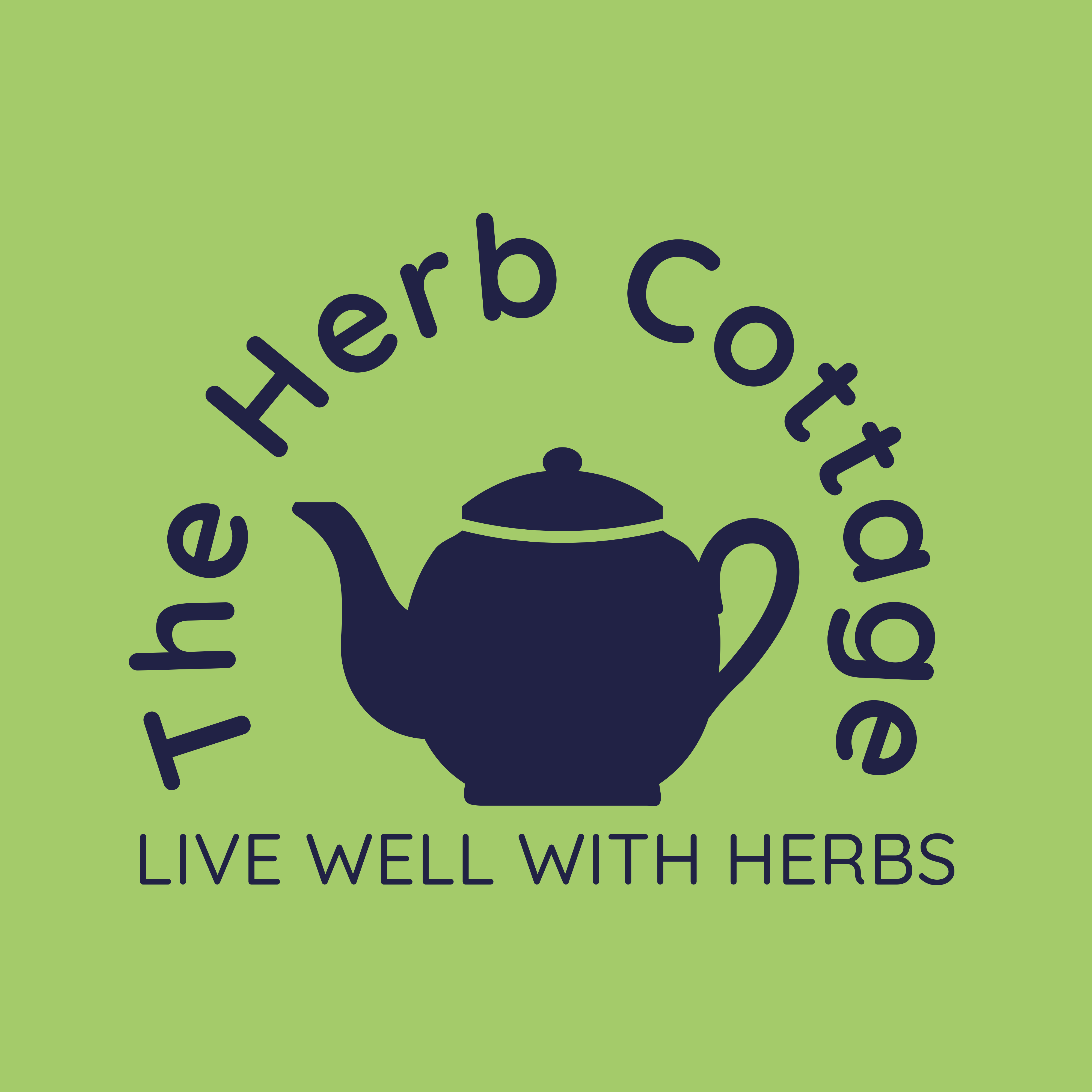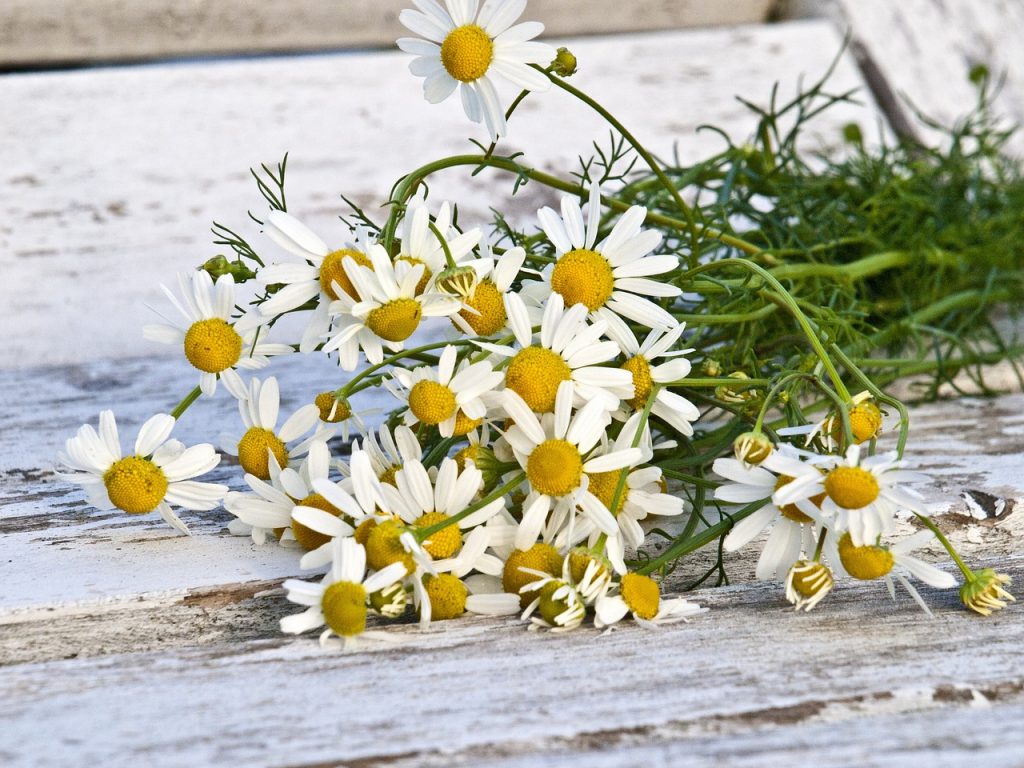
The International Herb Association designates an Herb of the Year for each year since 1995. The purpose in choosing a particular herb is to encourage more study and recognition of the herb. The International Herb Association says this: The Horticultural Committee evaluates possible choices based on them being outstanding in at least two of the three major categories: medicinal, culinary, or decorative. Herb societies, groups, and organizations, from around the world, work together to educate the public about these important herbs throughout the year.
In my opinion, Chamomile is a wonderful choice for Herb of the Year 2025. Chamomile is readily accessible, appropriate for all ages and generally well tolerated. As with any herb, there are always cautions.
Adverse effects of Chamomile Tea
Drinking chamomile tea is generally safe for most people
There have been reports of chamomile allergies, which are most likely to occur in individuals who are allergic to plants in the daisy family, such as ragweed and chrysanthemums. Additionally, cosmetic products that contain chamomile may be irritating to the eyes.
It’s also important to note that the safety of drinking chamomile tea has not been established in young children, pregnant or nursing women and people with liver or kidney disease. [This does not mean people in those populations cannot drink chamomile tea, it just means no studies have been done. Please keep reading for historical and anecdotal evidence of the uses of chamomile throughout history.]
Nevertheless, there have not been any reports of life-threatening adverse reactions or toxicity from drinking chamomile tea. If you have concerns or think you may have an allergy or intolerance, it’s a good idea to speak with a doctor.
https://www.healthline.com/nutrition/5-benefits-of-chamomile-tea#risks
Historical Uses of Chamomile Tea
According to Rosalee de la Foret, a dedicated herbalist, there archaelogical evidence of the use of Chamomile dating back as far as 800,000 years! John Gerard, an herbalist in the early 17th century wrote: [chamomile is] “exceedingly good against all manner of ache and pain, bruisings, shrinking of sinews, hardness, and cold swellings.” In the Ayurvedic system of medicinal herbal usage from India, mentions Chamomile as an emotionally and mentally soothing herb, especially when taken in tea.
Modern Benefits of Chamomile Tea
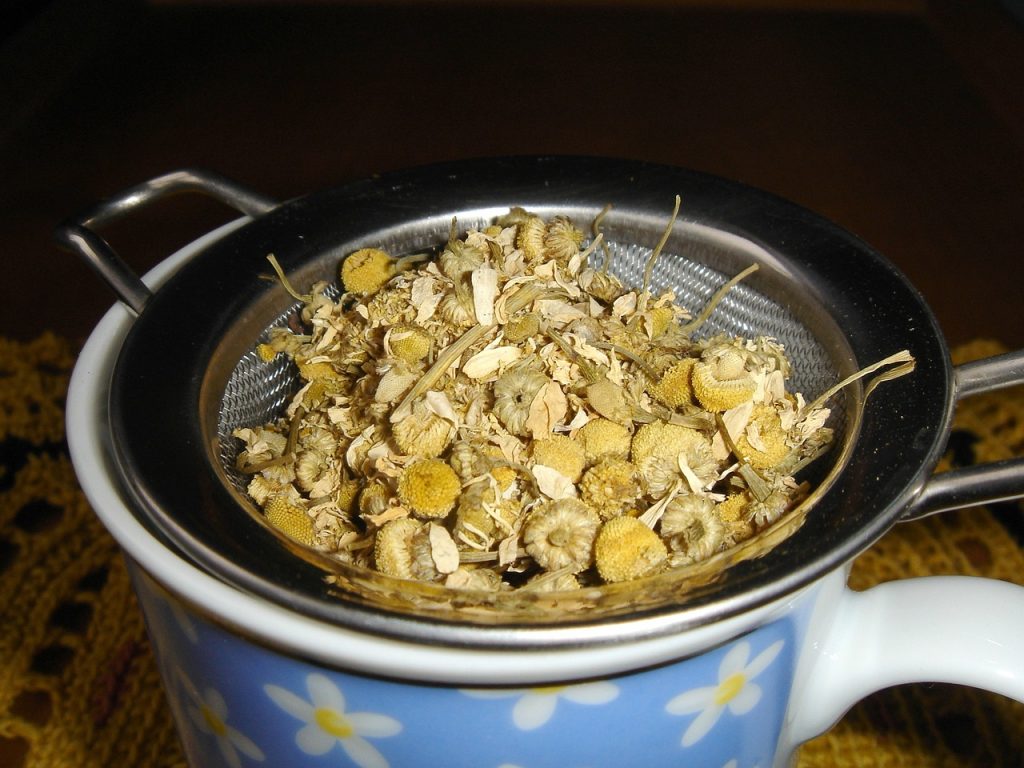
To me, a cup of Chamomile Tea is a perfect way to take the edge off of anxiety, racing thoughts or the feeling of trying to get everything done at once. I often drink a cup of Chamomile Tea after supper, not just for its digestive benefits, but also to help me mellow out so by the time I prepare for bed, the agitations of the day are quelled.
Chamomile is so much more than a soothing tea, however. As Gerard states, Chamomile can help ease aches and pains when applied topically as an oil or in a salve. Even the tea can help with aches and pains, as it beneficially affects the nervous system. Chamomile also helps reduce muscle tension. A few minutes’ break with a cup of strong Chamomile Tea and you will notice your shoulders relaxing and muscle tension lessen. Headaches caused by muscle tension in the neck and upper back can be eased with a cup of strong Chamomile Tea. And with the emotional uplift that Chamomile also provides, drinking Chamomile Tea is a welcome experience.
Fever
Another benefit of Chamomile Tea is when there is a fever accompanied by aches and pains. The action of Chamomile relaxes the body and allows the heat of the fever to dissipate through the skin, rather than artificially lowering the temperature. Taken as a strong tea, Chamomile can help the patient rest while easing the aches and pains of a fever.
Digestion
Chamomile Tea is a wonderful herb to aid digestion. Enjoyed as an after dinner beverage to help the body properly digest food, it allows all the beneficial nutrients from the food to be taken in by the body. Part of its action is in breaking down fats, which helps the digestive system absorb nutrients and dispose of the waste.
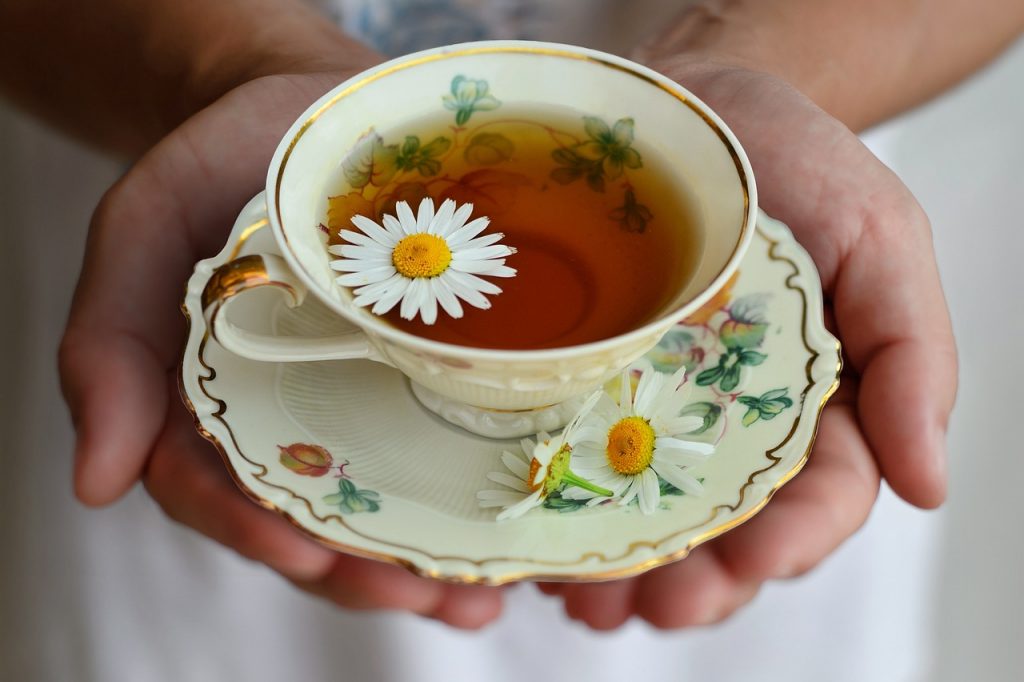
Modulating Inflammation
Chamomile Tea is often used as a topical wash for rashes, burns- even sunburn- and on insect bites and stings. A salve made from a carrier oil infused with Chamomile is another way to use Chamomile topically. Infusing Chamomile in Witch Hazel and filling a roller tip bottle is yet another way to apply Chamomile topically.
For Children
Children benefit from the calming and soothing action of Chamomile, especially during a cold or flu. A sweetened cup of Chamomile Tea can help a child sleep better while ill.
The Plant
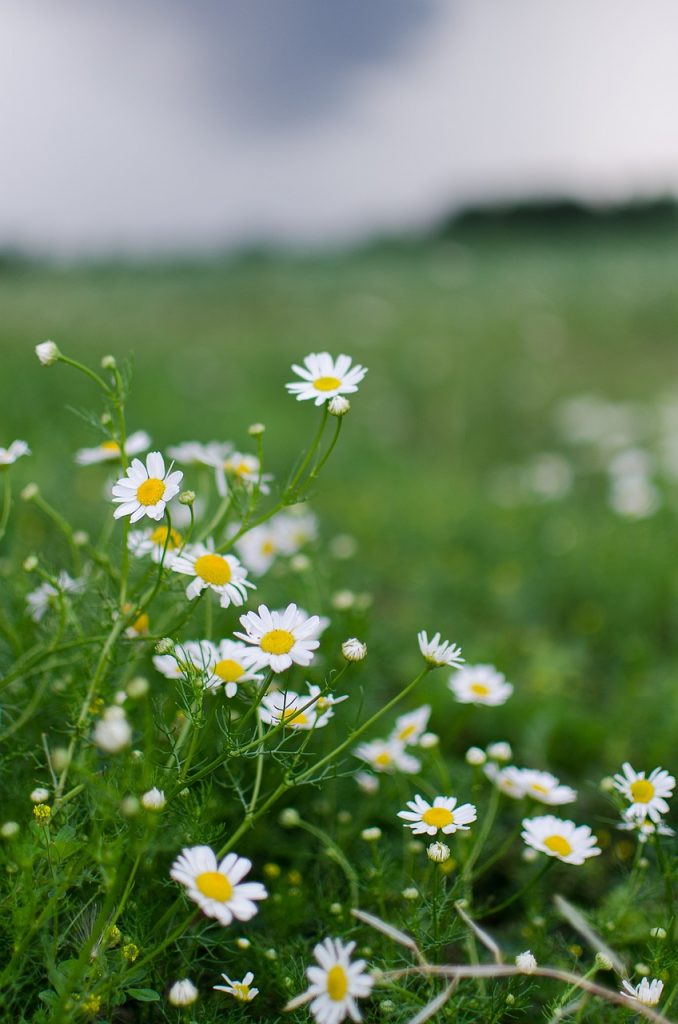
There are actually two different plants, both called Chamomile. One is commonly called German Chamomile, Matricaria chamomilla, syn Matricaria recutita, the other Roman Chamomile, Matricaria nobile. Sometimes these two plants from the same family are confused, one with the other. They each have different chemical profiles and are not interchangeable. This article is about German Chamomile, Matricaria chamomilla.
There is another Matricaria known a Pineapple Weed, Matricaria discoidea. This weed grows in hard packed soil along roadsides and even driveways. It tends to be low growing, but if you pick a flower and crush it you will notice the telltale Chamomile fragrance. If you like to forage and can find this plant in areas that are not contaminated by cars or other roadside issues, feel free to harvest it and use it like the German Chamomile.
The German Chamomile plant, like many herbs, likes a sunny spot, well drained soil and average water. Here in the Southern US, South Central Texas, to be exact, German Chamomile grows as a late winter/early spring plant. It does not like our hot summers.
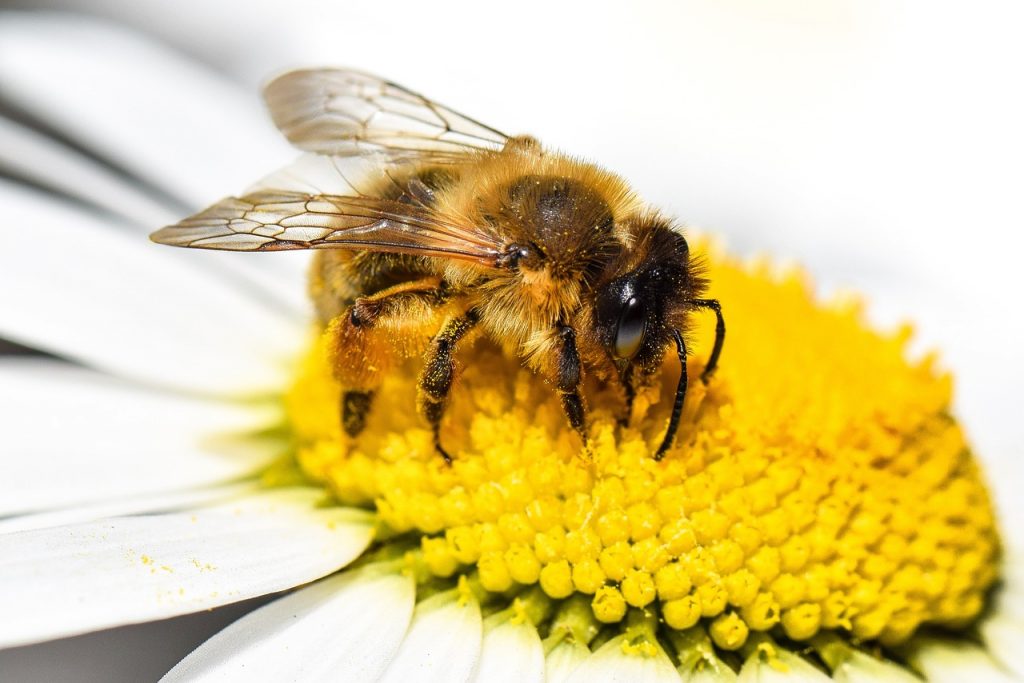
Chamomile of any variety is a pollinator attractor. Bees and butterflies are attracted to it.
Since it tends to grow as an annual, regular harvesting of the top about 4″ of the stems to use for tea will allow you multiple harvests throughout the season. If you leave some of the flowers on the plant late in the season allowing them to mature and set seed, they will gladly reseed for you for next year. The tender tops of the stems along with the flowers can all be used for tea. To preserve your Chamomile harvest, dry the parts you harvested and store them in an air-tight container for use as tea, to infuse into a carrier or to make into a tincture.
How to Use Chamomile
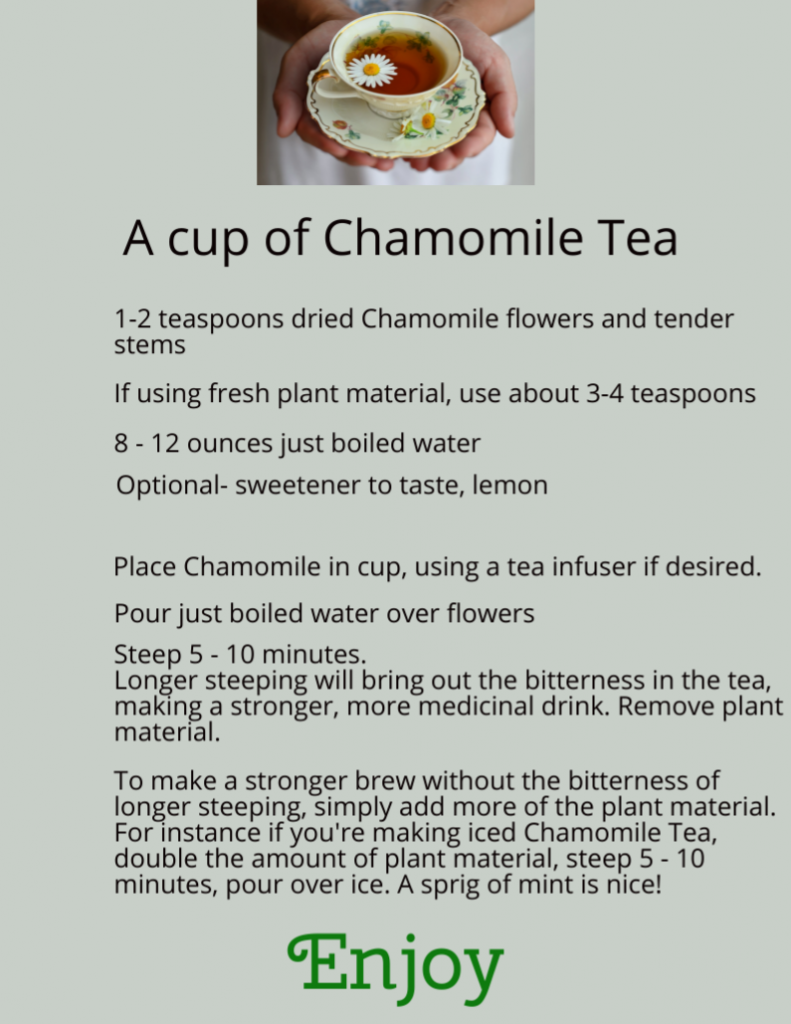
One last note: a tablespoon of Chamomile Syrup mixed with sparkling water over ice is a refreshing replacement for soda. The syrup diluted with water makes tasty and healthy popsicles.
CHAMOMILE SIMPLE SYRUP
- 1 cup sugar
- 1 cup water
- Handful of fresh Chamomile flowers and tops OR about ¼-½ cup dried Chamomile
Add water and sugar to saucepan. Heat gently until simmering. Turn off heat, add the Chamomile and let rest until the mixture cools. Strain out plant material and store syrup in the refrigerator for up to 1 month.
